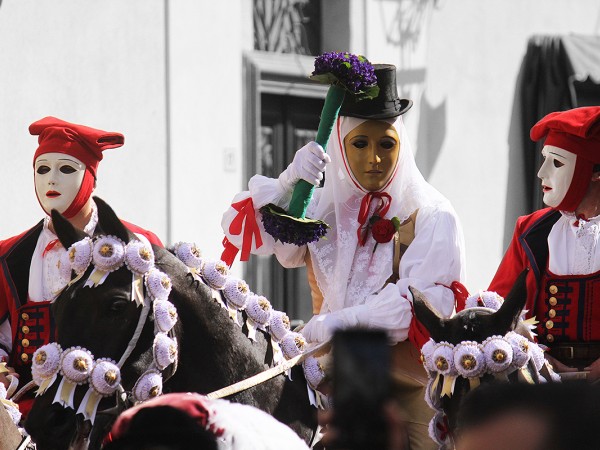The Sartiglia between culture and tradition The Sartiglia is not a simple celebration of carnival rituals, it is not even the reproduction of a medieval carousel, nor a mere display of daring and handsome knights. Inside the Sartiglia coexist elements of tradition and culture handed down for hundreds and probably for many thousands of years.
In this event, which in Oristano has lived with indescribable emotional intensity since the time of the Giudicato d’Arborea, some of the most interesting and unexplored aspects of pagan rituals, contaminated by ceremonials of Christian origin, probably survive. The Sartiglia of Oristano presumably originates from the game of the ring, sortija, contaminating itself with all those pagan elements that are proper to this people. The race of the Sartiglia is in fact linked to the cyclical nature of the seasons and has reason to exist as a propitiation for the harvest.
The Componidori is the divine medium that acts to obtain the result. At the end of the Sartiglia su Componidori he recomposes the pairs, made up of trio of riders and horses side by side, and runs along via Eleonora, piazza Eleonora, the Corso Umberto up to piazza Roma, entering via Mazzini to give life to the exhibition of the pariglie; this race consists in traveling the long and straight via Mazzini while the riders make various types of evolutions on their horses thrown at wild gallops. The most skilled and daredevils are also capable of standing on both sides, holding their partner in the center, who is standing vertically, governing the three thoroughbreds that pair in gallop at maximum speed.
The only pair (Terzetto) that cannot perform is that of su Componidori, who will have to limit himself to a gallop while the two companions on his sides hold the reins (sometimes placing his hands on the shoulders of his companions); in fact, not being able to risk falling and touching the ground, he is not allowed to attempt acrobatics.
